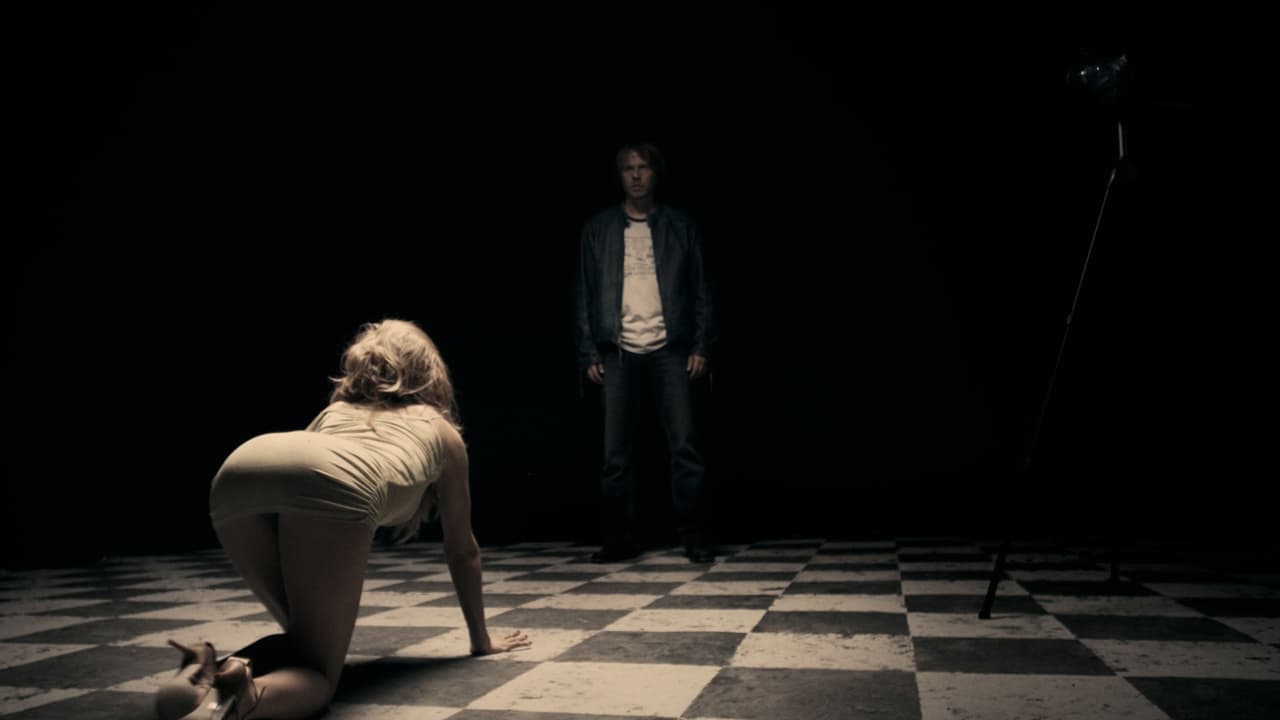
In Extremis: Obscenity and A Serbian Film
Disclaimer: I normally write cute intros; this time no. I have no way of “spoiling” this film for you. It is an ouroboros of spoiled. Never do anything depicted in the film and please seek independent legal advice before watching it, as the movie itself is illegal in some countries.
Trigger Warning: The film depicts child pornography, sexual assault, necrophilia, and other disturbing content. I will limit references to the actual content of the film, however, it may still be triggering for some readers. I invite everyone to skip this article if such an effect may occur.
Satire: A poem or (in later use) a novel, film, or other work of art which uses humour, irony, exaggeration, or ridicule to expose and criticize prevailing immorality or foolishness, esp. as a form of social or political commentary. Frequently with on, of, against.(1)
A Serbian Film (2010) is a “satirical” exploitation horror film. Just like the Satyr, the half-goat men of ancient Greece used as chorus members in Satyr plays, the film is known for sexual assault, child death, and parodying tragedy through the use of bawdy and obscene “humour.” But can art be too obscene? Many people are familiar with Justice Potter Stewart’s famous comment on obscenity/pornography -- “I know it when I see it.”(2) So what happens if you apply the legal standards for obscenity and child pornography to A Serbian Film? Should this film be censored/made illegal and what are the effects of doing so?
The first question we must answer is why we care about obscenity in the first place. Free speech is one of the protected grounds under the first amendment to the United States Constitution. A law made by Congress may not limit free speech unless it falls within a categorical exception such as: incitement of violence, false statements of fact, child pornography, and obscenity. Thus, if speech -- in this case, a film -- is obscene, then it can be censored by law.
The test for obscenity as outlined by the United States Supreme Court (USSC) is "whether to the average person, applying contemporary community standards, the dominant theme of the material taken as a whole appeals to prurient interest."(3)
Prurient appeal means a degrading, unhealthy, or morbid interest in sex, as opposed to a mere candid interest. It applies to the whole piece in context, not just portions of, and assessed by looking at whether the average person with a normal interest in sex finds it prurient. Putting your standards on the contemporary community will always lead to some biases, and in fact the test references assessing the material and whether it appeals to the prurient interest of a targeted "deviant group" such as the BDSM community and homosexuals,(4) because America is boring in the sack.
Second, does the work depict or describe sexual conduct in a patently offensive way. Again, the court uses community standards to determine whether any sexual acts, excretory functions, displays of genitals, etc. exceed what the average local person is cool with seeing.
Third, a work cannot be limited unless it is "utterly without redeeming social importance." Accordingly, material that deals with sex in a manner that advocates ideas, or that has literary or scientific or artistic value or any other form of social importance, may not be held obscene and denied constitutional protection.(5)
One final important factor is which court is examining the material and where the material is being exhibited. The USSC held that there should be no national standard for decency.(6) However, when you look at content on the internet (in one case applying the Child Online Protection Act, 47 U.S.C. 231),(7) other judges decided that applying a local standard would allow conservative states to unfairly dictate what is obscene.(8) Due to this conflict, the state in which a case is heard may be of important value.
Now, let's apply these standards to A Serbian Film. I contend it is prurient, as the film’s depicted scenes involve a lot of degrading sex, much of it deviant and criminal -- the film's theme is sexual exploitation. The average person would turn this movie off and cry; this is patently offensive sex. No need to list all the pedophilia and necrophilia to prove it.
Here is the conflict; depending on the jury, they could find this film has no artistic value or social importance. The director says the film is about PC culture run amok and Serbia's foreign financed films that are more about political correctness than substance.(9) With this context these are scenes of parody and satirical criticism.
Without any context, this film is a series of horrific sexual violence vignettes and the viewer may miss the intended meaning. Interestingly, this film has been illegally downloaded most often because of government censorship/community standards. This downloaded version removes an introduction from the director contextualizing the film as political satire. Thus, many observers are seeing the film without this framing, depriving it of meaning.
In summation, depending on what state you are in, a court and jury may find these characteristics meet the standard of obscenity and may not be worthy of protection.
Is this film Child Pornography? A much more horrifying question to answer. In Norway, the answer would be yes. But not in the US. The USSC in Ashcroft v Free Speech Coalition,(10) struck down two provisions of the Child Pornography Prevention Act of 1996 because they abridged "the freedom to engage in a substantial amount of lawful speech." The provisions prevented visual depiction of what "appears to be a minor" or advertising/promoting a depiction that "conveys the impression" that a minor is engaged in sexually explicit content. The government argued this was to stop virtual depictions of child porn, but the language was so broad it would catch films like American Beauty (1999) -- the irony is noted. After this decision, the PROTECT act,(11) was developed to fix the gap created for virtual child porn.
This film depicts child porn but no actual children engaged in sexual activity, so it is protected by US free speech. However, this film is still illegal in Norway, as it violates two sections of their Penal Code: sections 204(a) -- distributing/purchasing depictions of sexual abuse of a child where child is defined as a person who is or appears to be under 18; and 382 -- distributing media depicting gross violence (violent sexual assault).(12) The very act of owning the film in Norway is a crime.
This movie is satirical; it (hopefully) exaggerates the levels of human depravity to deride exploitation of a country and its people, whether the director intended that or not. I do not think this film is obscene -- but I don't set the community standard. The public and judges set the community standard, so let's all reflect on what obscenity really means before making any decisions. Especially when people can see films like this easily on the internet and banning them drives people to see them.
Do you want my non-legal opinion? Never watch this f*cking movie. Norway is right; it's full of over the top violence against women and other disgusting acts that lose any meaning after they are frequently repeated. Read a book of Serbian aphorisms instead. They are dark AND funny.(13) It builds good will and a likable lead and throws those away through senseless shock imagery. This is one of few films where I'd tell you to instead watch I Spit on Your Grave (1978). I give it a 2.5/10; for the creative cinematography, effective minimalist set dressing, and the lead delivering a grueling performance.
- Satire. (2013). In Oxford English Dictionary, www.oed.com/viewdictionaryentry/Entry/171207
- Jacobellis v Ohio, 78 U.S. 184, page 378. Note: the film in this case that someone argued was obscene, Les Amants (1958), is a french drama about a woman leaving her husband for a younger man *GASP*.
- Roth v United States, 354 U.S. 476 . Pp. 191-195.
- W. Corbin Howard, “Miller, Jenkins, and the Definition of Obscenity”. Montana Law Review, Vol 36, Issue 2, 1975. scholarship.law.umt.edu/cgi/viewcontent.cgi?article=2133&context=mlr ; Mishkin v. New York, 383 U.S. 502 (1966). The Court also allowed the prurient appeal of material to be determined on the basis of its effect upon minors. Ginsberg v. New York, 390 U.S. 629, 641 (1968); however a gay (2SLGBTQA+) magazine’s free speech right was upheld in 1958 - One, Inc. v. Olesen, 355 U.S. 371.
- Ibid.
- Miller v California, 413 U.S. 15. supreme.justia.com/cases/federal/us/413/15/
- Ashcroft v American Civil Liberties Union, 535 U.S. 564, www.law.cornell.edu/supct/html/03-218.ZS.html
- New York v. Ferber, 458 U.S. 747, supreme.justia.com/cases/federal/us/458/747/
- Frederico Larlori, “Aleksandar Radivojevic of ‘A Serbian Film’: it’s catharsis more than ‘torture porn’”. Translated from "A Serbian Film": una doccia di sangue per risvegliare le coscienze. Cae Babel, March 15, 2011, accessed online April 2020. cafebabel.com/en/article/aleksandar-radivojevic-of-a-serbian-film-its-catharsis-more-than-torture-porn-5ae0078ef723b35a145e20b4/
- Supra 7. www.tportal.hr/magazin/clanak/ovdje-ce-te-cijeniti-jedino-kad-crknes-20090310.
- I kid you not, it's an acronym that stands for "Prosecutorial Remedies and Other Tools to end the Exploitation of Children Today," Pub.L. 108–21, 117 Stat. 650, S. 151 and allows for life sentences for federally supervised release, mainly sex offenders.
- Norway, Penal Code (No. 28 of 2005), www.ilo.org/dyn/natlex/natlex4.detail?p_lang=en&p_isn=70847; Declared Illegal by the Danish and Norwegian film board -- Martine Lunder Brenne and Atle Jørstad Wergeland,«Verdens verste film» forbudt i Norge: - Forbudet virker mot sin hensikt. VG - July, 2011. www.vg.no/rampelys/i/nzXqm/verdens-verste-film-forbudt-i-norge-forbudet-virker-mot-sin-hensikt
- Dan Bilefsky, Dark One-Liners Shine a Light on the Mood of Serbs, New York Times, December 2nd, 2007. www.nytimes.com/2007/12/02/world/europe/02serbia.html.

